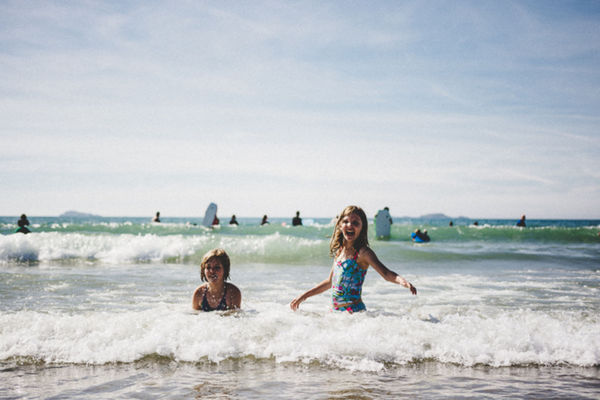Swim in an ocean
Swim safely at a supervised beach with an adult, wear a life jacket if needed, learn about waves, currents, and respecting marine life.



Step-by-step guide to swim safely at a supervised ocean beach
Learn to Swim at Waikiki Beach 🌊 | Ocean Swimming for Beginners | Water Safety, Confidence & Tips
Step 1
Ask an adult to take you to a supervised beach where a lifeguard is on duty.
Step 2
Look at the beach warning flags to see the current water conditions.
Step 3
Ask the lifeguard whether it is safe to swim today.
Step 4
Apply sunscreen to all exposed skin.
Step 5
Put on your sun hat.
Step 6
Put on a properly fitted life jacket if you are not a strong swimmer or the lifeguard suggests it.
Step 7
Walk to the water's edge and watch the waves for a few minutes to learn their pattern.
Step 8
Stand in shallow water and feel how small waves move your feet.
Step 9
Practice floating on your back in shoulder-deep water with the adult close by.
Step 10
Enter the water only when the lifeguard gives permission.
Step 11
Stay within arm's reach of the adult if you are still learning to swim.
Step 12
If a wave knocks you down, surface quickly.
Step 13
Look for rip currents by spotting churning water or a fast channel moving away from shore and avoid those areas.
Step 14
Keep a safe distance from marine animals and do not touch or remove shells or plants.
Step 15
Share your finished creation on DIY.org.
Final steps
You're almost there! Complete all the steps, bring your creation to life, post it, and conquer the challenge!


Help!?
If I can't find a lifeguard or a properly fitted life jacket, what should we substitute?
If a supervised beach with a lifeguard isn't available or you can't find a properly fitted life jacket, postpone swimming and instead go to a public pool with a lifeguard or borrow a Coast Guard–approved, properly fitted life jacket from the beach office or rental shop.
What should we do if the child can't master floating on their back or keeps getting knocked over by waves?
Follow the instructions to practice floating on your back in shoulder‑deep water with the adult close by, have the adult support under the shoulders until the child relaxes and can breathe steadily, and watch the waves from the water's edge to learn their pattern so you enter only when calmer and with the lifeguard's permission.
How can we adapt the steps for toddlers, younger kids, or older children?
For toddlers keep them within arm's reach in shallow water wearing a properly fitted life jacket and sun hat, for younger learners focus on wave-watching and short assisted back-float practice with sunscreen applied, and for older children add reading beach warning flags, asking the lifeguard about rip currents, and practicing spotting churning water from the shore.
How can we extend or personalize the beach swim activity once we've completed the steps?
Personalize the experience by decorating your sun hat or life jacket, keeping a short wave-watch journal that records beach warning flags and wave patterns, practicing longer back floats with the adult nearby, and then sharing your photos or journal entries on DIY.org as suggested.
Watch videos on how to swim safely at a supervised ocean beach
LEARN TO SWIM | Ep.1 Building Water Comfort | Breath control, sculling, safety skills for beginners
Facts about water safety for kids
🦺 A properly fitted life jacket can keep a non-swimmer floating face-up and greatly increase the chance of survival in rough water.
🌊 Most waves are made by wind — their size depends on wind speed, how long the wind blows, and the fetch (how far it blows over water).
🐢 Respect marine life: some animals like jellyfish or sea urchins can sting or cause injury, so look but don’t touch.
🚩 Rip currents can move faster than an Olympic swimmer and are the main reason people get pulled away from shore — don’t panic, swim parallel to escape one.
🏊 Swimming at a supervised beach with a lifeguard and an adult nearby is one of the best ways to stay safe in the ocean.
How do you swim safely in the ocean with a child?
What materials do I need for a child to swim at the ocean?
What ages is ocean swimming suitable for children?
What are the benefits of ocean swimming for children?


One subscription, many ways to play and learn.
Only $6.99 after trial. No credit card required


